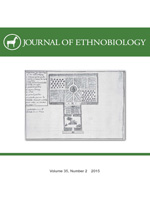Genetically modified (GM) crops may threaten agrobiodiversity because: (1) genetic material could escape into and subsequently alter non-GM species; and (2) GM crops encourage farmers along an agronomic feedback loop encouraging input-intensive monocultures. However, in the Warangal district of Telangana, India, GM cotton farms also contain nearly 100 semi-managed vegetables, trees, and wild plants belonging to 39 botanical families. While farmers continue to plant poorly understood, deceptively labeled Bt (Bacillus thuringiensis Berliner) cotton seeds in their fields, they also maintain an average of 17 other plants on the same farms for home economic needs. This paper draws on surveys, field interviews, and ethnography conducted among randomly sampled Bt cotton farmers to show the full range of economic plants cultivated on Warangal GM farms. In doing so, I argue that some farmers have been able to preserve agrobiodiversity despite the pressures of GM cotton cash cropping. That agrobiodiversity has potential benefits for Indigenous knowledge and drawbacks for environmental and health concerns.
How to translate text using browser tools
1 July 2015
Persistent Agrobiodiversity on Genetically Modified Cotton Farms in Telangana, India
Andrew Flachs
ACCESS THE FULL ARTICLE
It is not available for individual sale.
This article is only available to subscribers.
It is not available for individual sale.
It is not available for individual sale.
<
Previous Article
|

Journal of Ethnobiology
Vol. 35 • No. 2
July 2015
Vol. 35 • No. 2
July 2015
agriculture
agrobiodiversity
genetically modified organisms
Indigenous knowledge
South India




